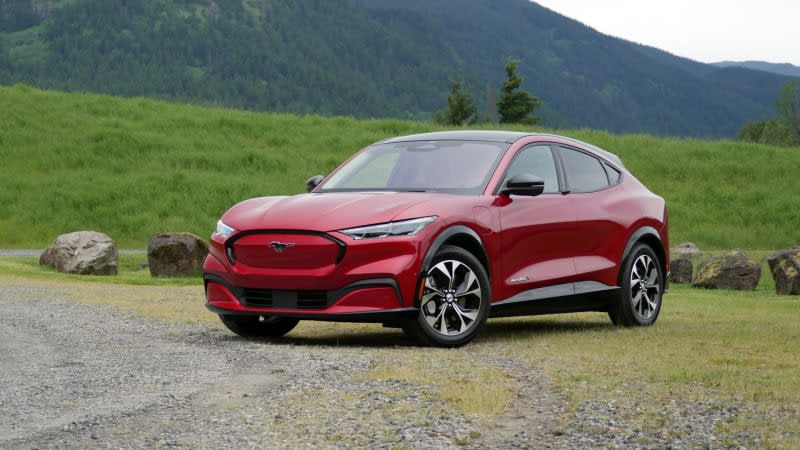Hyundai Ioniq 5 vs Ford Mustang Mach-E: Comparing electric unobtanium
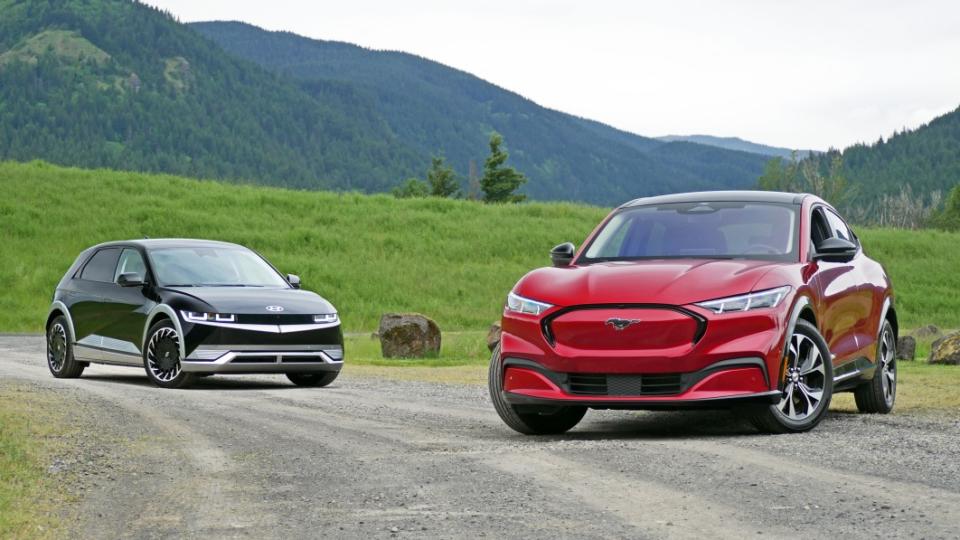
If you had asked us 10 years ago what an electric car comparison test would look like, there’s a good chance we’d envision a pair of compact hatchbacks that were a bit slow, a lot dorky and not really appealing outside of the tree hugger set. The Tesla Model S was just reaching homes, but it was pricey, and it was hard to foresee it changing the automotive industry as it did.
Thank goodness our imaginations were so poor. The Hyundai Ioniq 5 and Ford Mustang Mach-E are not only electric cars, but they are two of the most interesting and flat-out cool cars to come along in the past few years. They’re definitely not slow, definitely not dorky and judging by how hard it is to get one (order books are already closed for the ’22 Mach-E), they definitely have wide appeal.
In the end, this comparison test was not close. Although the two test cars were about as closely matched as possible on price, equipment and specs, there was a clear winner once the points were tallied. Thing is, though, both are so good that even coming in a distant second is enough to be one helluva cool car … electric or otherwise.
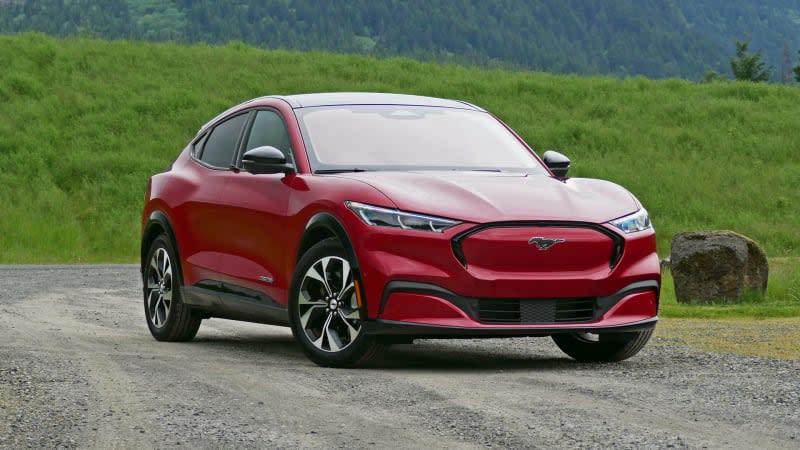
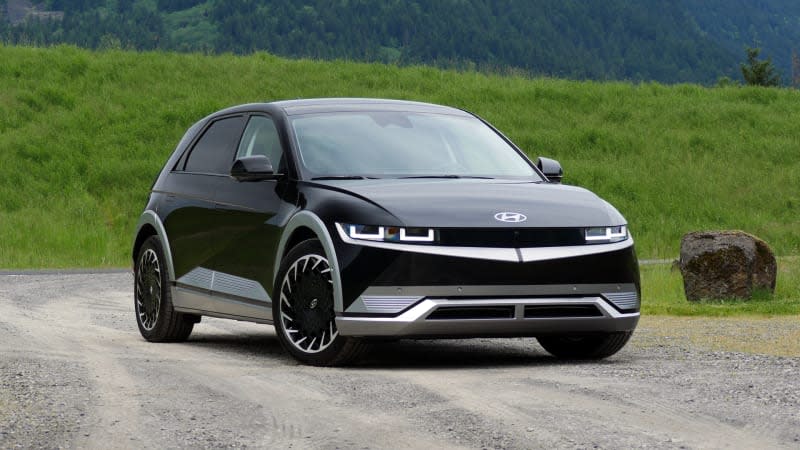
The contenders
First up, the 2022 Hyundai Ioniq 5 Limited AWD. It’s the top of the line with an as-tested price of $55,940, including destination and $195 worth of floor mats. Like the Ford, it is eligible for the full $7,500 federal tax credit and falls under California’s maximum price threshold for getting that state’s $2,000 EV rebate. While the base Ioniq 5 has a 58-kilowatt-hour battery good for 220 miles, all other trim levels have the 77.4-kWh long-range battery. With rear-wheel drive, its single motor produces 225 horsepower and 258 pound-feet of torque. EPA-estimated range is 303 miles. Opting for all-wheel drive like our test car adds a motor to the front axle that results in a total output of 320 hp and 446 lb-ft of torque. Range drops to 256 miles.
Next, the Ford Mustang Mach-E. Although we literally tested a 2021 Ford Mustang Mach-E, it’s easy enough to see how much the same vehicle cost for 2022 (yes, past tense, order books are closed). In short, it would be $59,300 as tested – or about $4,000 more expensive than the equivalent ’21 Mach-E and our Ioniq 5 test car. That as-tested price includes the Mach-E’s optional, 88-kWh extended range battery. We appreciate that Ford gives you the option to get a higher trim level Mach-E without paying $5,000 extra for range you may not need.
The Mach-E battery/motor/drivetrain specs are even more complex than the Ioniq 5 because of that optional battery, but in short, the bigger battery yields more power and range, while opting for all-wheel drive adds more power but reduces range. Our test vehicle was a Mach-E Premium trim with the extended range battery (91 kWh versus 71) and all-wheel drive. All together, it produces 346 hp and 428 lb-ft of torque with an EPA-estimated range of 270 miles for 2022. Ford eked a handful of extra miles out of the battery for ’22, so it’s possible the results we found for the ’21 could be even better. Unlike the Hyundai, our Ford test car does not represent the pinnacle of Mach-E performance: that would the Mach-E GT.
Second Place: Ford Mustang Mach-E
Under normal circumstances, we would’ve weighted our scorecard so that value would’ve counted for more. Had we, the Mach-E would’ve been toast before this test even began. Its higher price for 2022 puts it at an even greater disadvantage against the Ioniq 5, plus the Ford has notably less equipment and worse charging capabilities. These are not normal circumstances, however, as the “suggested” in Manufacturer’s Suggested Retail Price has never been so meaningful. You’re going to be pay way more than sticker for both, and to make matters worse, order books are closed for the ’22 Mach-E. Basically, the situation is too uniquely complicated to weigh value too much.
Instead, the Mustang comes in second because the Ioniq 5 is just a bit better in most areas. The Mach-E is quick, but the Hyundai is quicker. The Mach-E has nicely modulated brakes with a well-calibrated one-pedal drive mode, but the Hyundai has multiple regeneration settings and an even more natural-feeling pedal. The Mach-E has the option of BlueCruise hands-free driving, but Hyundai’s overall suite of standard driver assistance features is superior. The Ford’s interior is well-made and functional with easy-to-use technology, but the Ioniq 5 basically matches it. Sometimes you can put in a good performance and just get beat.
There are areas where the Mach-E is superior, however. The first is cargo space. While the Ioniq 5 offers greater versatility thanks to its sliding back seat, you have to utilize that (and restrict back seat space in the process) in order to match the Mustang trunk’s basic space and functionality. You can see how much easier it was to fit the same bags in the two cars below (and note that we had to remove the cargo cover from the Ioniq). The Mach-E also has a more useful frunk, should that even matter.
Dive deeper into the cargo areas in our Mustang Mach-E Luggage Test and Hyundai Ioniq 5 Luggage Test
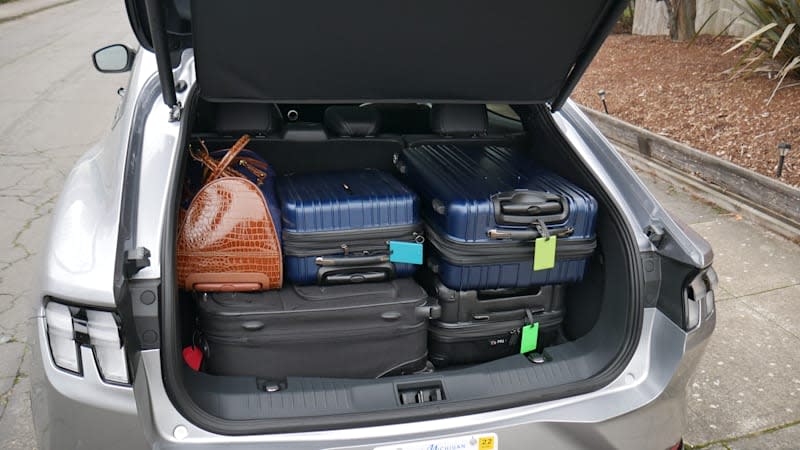

Ford also came out on top for range and efficiency. Both the Ioniq 5 and Mach-E were more efficient in our testing than their EPA estimates would indicate, but the Mustang did particularly well. It swallowed electrons at a rate of 32.26 kWh per 100 miles, which is better than both its EPA estimate (37 kWh/100 miles) and what we managed in the supposedly more efficient Ioniq 5. It saw 31.25 kWh/100 miles versus an EPA estimate of 34 kWh/100 miles.

 Yahoo Autos
Yahoo Autos 
